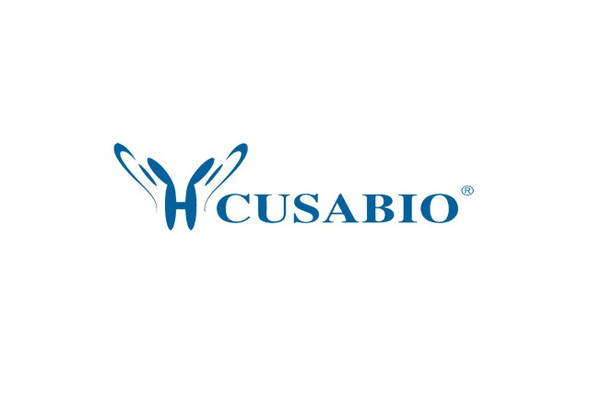Cusabio Escherichia coli Recombinants
Recombinant Escherichia coli Transcriptional regulatory protein phoP (phoP) | CSB-EP326097ENV
- SKU:
- CSB-EP326097ENV
- Availability:
- 3 - 7 Working Days
Description
Recombinant Escherichia coli Transcriptional regulatory protein phoP (phoP) | CSB-EP326097ENV | Cusabio
Alternative Name(s): phoP; b1130; JW1116; Transcriptional regulatory protein PhoP
Gene Names: phoP
Research Areas: Others
Organism: Escherichia coli (strain K12)
AA Sequence: MRVLVVEDNALLRHHLKVQIQDAGHQVDDAEDAKEADYYLNEHIPDIAIVDLGLPDEDGLSLIRRWRSNDVSLPILVLTARESWQDKVEVLSAGADDYVTKPFHIEEVMARMQALMRRNSGLASQVISLPPFQVDLSRRELSINDEVIKLTAFEYTIMETLIRNNGKVVSKDSLMLQLYPDAELRESHTIDVLMGRLRKKIQAQYPQEVITTVRGQGYLFELR
Source: E.coli
Tag Info: N-terminal 10xHis-tagged and C-terminal Myc-tagged
Expression Region: 1-223aa
Sequence Info: Full Length
MW: 30.5 kDa
Purity: Greater than 90% as determined by SDS-PAGE.
Relevance: Member of the two-component regulatory system PhoP/PhoQ involved in adaptation to low Mg2+ environments and the control of acid resistance genes. In low periplasmic Mg2+, PhoQ phosphorylates PhoP, resulting in the expression of PhoP-activated genes (PAG) and repression of PhoP-repressed genes (PRG). In high periplasmic Mg2+, PhoQ dephosphorylates phospho-PhoP, resulting in the repression of PAG and may lead to expression of some PRG. Mediates magnesium influx to the cytosol by activation of MgtA. Promotes expression of the two-component regulatory system rstA/rstB and transcription of the hemL, mgrB, nagA, slyB, vboR and yrbL genes. Feedback inhibited by MgrB, which seems to bind PhoQ, altering its activity and that of downstream effector PhoP. PhoP-regulated transcription is redox-sensitive, being activated when the periplasm becomes more reducing (deletion of dsbA/dsbB, or treatment with dithiothreitol). MgrB acts between DsbA/DsbB and PhoP/PhoQ in this pathway.
Reference: "Escherichia coli proteome analysis using the gene-protein database." VanBogelen R.A., Abshire K.Z., Moldover B., Olson E.R., Neidhardt F.C. Electrophoresis 18:1243-1251(1997)
Storage: The shelf life is related to many factors, storage state, buffer ingredients, storage temperature and the stability of the protein itself. Generally, the shelf life of liquid form is 6 months at -20?/-80?. The shelf life of lyophilized form is 12 months at -20?/-80?.
Notes: Repeated freezing and thawing is not recommended. Store working aliquots at 4? for up to one week.
Function: Member of the two-component regulatory system PhoP/PhoQ involved in adaptation to low Mg(2+) environments and the control of acid resistance genes. In low periplasmic Mg(2+), PhoQ phosphorylates PhoP, resulting in the expression of PhoP-activated genes (PAG) and repression of PhoP-repressed genes (PRG). In high periplasmic Mg(2+), PhoQ dephosphorylates phospho-PhoP, resulting in the repression of PAG and may lead to expression of some PRG (By similarity). Mediates magnesium influx to the cytosol by activation of MgtA. Promotes expression of the two-component regulatory system rstA/rstB and transcription of the hemL, mgrB, nagA, slyB, vboR and yrbL genes.
Involvement in disease:
Subcellular Location: Cytoplasm
Protein Families:
Tissue Specificity:
Paythway:
Form: Liquid or Lyophilized powder
Buffer: If the delivery form is liquid, the default storage buffer is Tris/PBS-based buffer, 5%-50% glycerol. If the delivery form is lyophilized powder, the buffer before lyophilization is Tris/PBS-based buffer, 6% Trehalose, pH 8.0.
Reconstitution: We recommend that this vial be briefly centrifuged prior to opening to bring the contents to the bottom. Please reconstitute protein in deionized sterile water to a concentration of 0.1-1.0 mg/mL.We recommend to add 5-50% of glycerol (final concentration) and aliquot for long-term storage at -20?/-80?. Our default final concentration of glycerol is 50%. Customers could use it as reference.
Uniprot ID: P23836
HGNC Database Link: N/A
UniGene Database Link: N/A
KEGG Database Link: KEGG
STRING Database Link: STRING
OMIM Database Link: N/A










